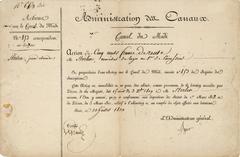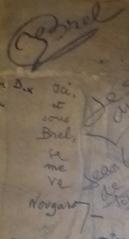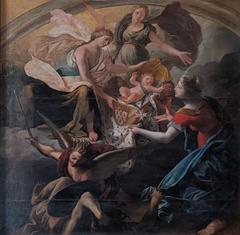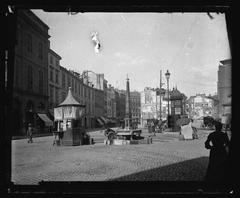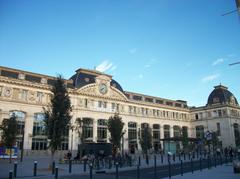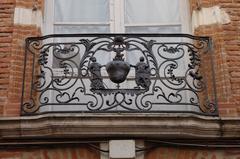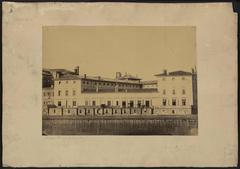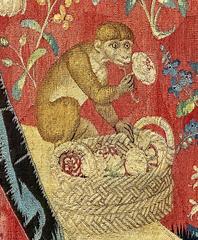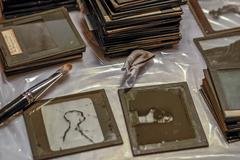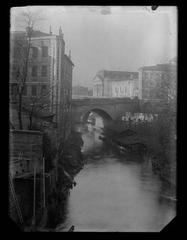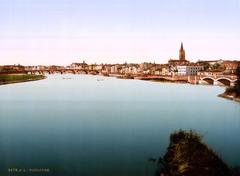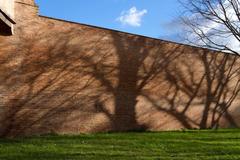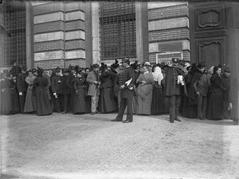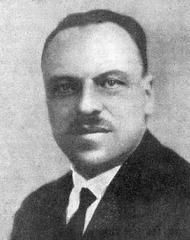Hôtel de Boysson-Cheverry Toulouse: Visiting Hours, Tickets, and Historical Sites Guide
Date: 03/07/2025
Introduction
Nestled in the heart of Toulouse, the Hôtel de Boysson-Cheverry is a striking example of the city’s Renaissance heritage and a vibrant hub for Occitan culture. This guide delivers in-depth information on the site’s historical context, architectural significance, visitor information, and cultural offerings, helping you make the most of your visit to this emblematic monument (Patrimoine de Toulouse; Toulouse Renaissance; Wikipedia).
Table of Contents
- Introduction
- Origins and Historical Background
- Architectural Features
- The Boysson and Cheverry Legacy
- Civic and Cultural Significance
- Visitor Information
- Maison de l’Occitanie: A Living Cultural Center
- FAQs
- Conclusion and Recommendations
- Additional Resources
Origins and Historical Background
The Hôtel de Boysson-Cheverry, at 11 rue Malcousinat, was initially commissioned in the late 15th century by Hugues (Huc) de Boysson, a prominent woad merchant and capitoul (municipal magistrate), and later acquired and expanded by Jean de Cheverry, another influential merchant. Their combined legacies are reflected in the mansion’s name, marking it as a symbol of the merchant elite’s ascent during the Renaissance (Toulouse Renaissance). The wealth generated by the pastel trade fueled the construction of such grand residences, which fused late Gothic and early Renaissance styles.
After surviving the devastating city fire of 1463, the mansion was rebuilt and progressively embellished, mirroring Toulouse’s urban transformation during the Renaissance. Today, the Hôtel de Boysson-Cheverry is recognized as a protected historical monument (Inventaire général du patrimoine culturel), owned by the City of Toulouse and hosting the Maison de l’Occitanie (Guide Toulouse Pyrénées).
Architectural Features
Gothic Foundations and Renaissance Innovation
The mansion blends Gothic robustness with Renaissance elegance. Its original 15th-century tower, rising over 24 meters with narrow windows and crenellations, nods to medieval traditions. The ground-floor fireplace, adorned with pointed arches and intricate stonework, stands as a masterpiece of Gothic craftsmanship.
In the 16th century, Jean de Cheverry’s renovations brought Renaissance flourishes: arcaded galleries, medallions, pilasters, and friezes inspired by Italian models and adapted to local materials. The use of alternating brick and stone (“brique et pierre”) gives the building its warm, rosy hue, earning Toulouse the nickname “La Ville Rose.” The mansion’s courtyards, grand staircases, and ornate windows with carved thistle garlands and animal figures exemplify the period’s artistic evolution (Nell Touche à Tout; Wix Bruguiere Blog).
The Boysson and Cheverry Legacy
Both Hugues de Boysson and Jean de Cheverry were influential figures in Toulouse’s civic and economic life. Their investment in this hôtel particulier was a declaration of status and a contribution to the city’s urban renewal. The mansion’s name and heraldic motifs pay lasting tribute to their roles in shaping Renaissance Toulouse (Wikipedia; Toulouse Renaissance).
Civic and Cultural Significance
Beyond its architectural merits, the Hôtel de Boysson-Cheverry has played a pivotal role in Toulouse’s social evolution. Built by and for the merchant elite, it reflects the city’s transition from feudal rule to the rise of a powerful bourgeoisie. The mansion is now a living center for Occitan culture, hosting the Maison de l’Occitanie and serving as a hub for language, music, and regional traditions (guide-tourisme-france.com).
Visitor Information
Hours and Tickets
- Maison de l’Occitanie: Open Monday to Friday, 9:00 AM – 6:00 PM (hours may vary for special events).
- General Admission: Free for most exhibitions and cultural activities; some ticketed events or workshops may require payment.
- Guided Tours: Available during heritage days and by group reservation. Advance booking is recommended, especially for guided experiences in French or English.
Accessibility
- Ground Floor and Courtyard: Wheelchair accessible.
- Upper Floors: Accessible only by stairs; contact the site in advance for special accommodations.
- Restrooms: Available on the ground floor.
How to Get There
- Address: 11 rue Malcousinat, 31000 Toulouse, France
- Metro: Line A to Capitole station (5-minute walk)
- Bus: Lines L7, 12, 14, 38, 44
- Parking: Limited street parking; public garages nearby.
Amenities
- Café/Bar: The associative tapas bar “La Topina” is open Tuesday to Saturday, offering Occitan specialties and a convivial atmosphere.
- Boutique: Occitan literature and crafts available on-site.
- Wi-Fi: Free access within the cultural center.
Nearby Attractions
- Capitole de Toulouse: Historic city hall and theater (167 m)
- Église Saint-Jérôme: Baroque church (106 m)
- Musée du Vieux Toulouse: City history museum (154 m)
- Couvent des Jacobins: Gothic cloister (300 m)
- Église Notre-Dame du Taur: Notable church (285 m)
Maison de l’Occitanie: A Living Cultural Center
Today, the Hôtel de Boysson-Cheverry is home to the Maison de l’Occitanie, a federation of more than 90 associations dedicated to preserving regional heritage. The center organizes:
- Language courses, concerts, exhibitions, and conferences
- Weekly “dijòus de l’Ostal” (Thursday cultural evenings)
- Community events, workshops, and festivals
- Educational programs for schools and universities
This dynamic programming fosters community engagement, linguistic diversity, and intercultural dialogue (guide-tourisme-france.com; Maison de l’Occitanie).
FAQs
Q: What are the visiting hours?
A: Maison de l’Occitanie is open Monday to Friday, 9:00 AM–6:00 PM. Hours may extend for special events.
Q: Is entry free?
A: General admission is free; some events or workshops may require tickets.
Q: Can I book a guided tour?
A: Yes, especially during heritage events or by group reservation. Advance booking recommended.
Q: Is the site accessible for visitors with disabilities?
A: The courtyard and ground floor are accessible; upper floors are not. Contact ahead for assistance.
Q: Can I take photos inside?
A: Photography is allowed in public areas and the courtyard; check for restrictions during exhibitions.
Q: Are there nearby attractions?
A: Yes. Capitole de Toulouse, Musée du Vieux Toulouse, Hôtel d’Assézat, and Couvent des Jacobins are within walking distance.
Conclusion and Recommendations
The Hôtel de Boysson-Cheverry is more than a historic monument—it is a living bridge between Toulouse’s Renaissance legacy and its contemporary cultural life. Its blend of Gothic and Renaissance architecture, rich merchant history, and vibrant role as Maison de l’Occitanie make it an essential destination. Enhance your visit by checking the calendar for special events, participating in guided tours, and exploring nearby landmarks.
For an enriched experience, download the Audiala app for audio guides, event updates, and personalized itineraries. Stay connected via social media for the latest news and exclusive content.
Additional Resources
- Guide Toulouse Pyrénées: Hôtel de Boysson
- Maison de l’Occitanie
- Nell Touche à Tout: Hôtel de Boysson-Cheverry
- HikersBay: Hôtel de Cheverry
- Patrimoine de Toulouse
- Toulouse Renaissance
- Inventaire général du patrimoine culturel

